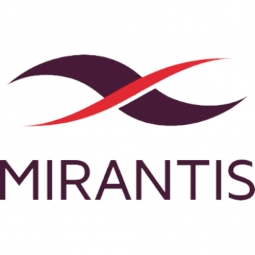Download PDF
Japanese Telecom Deploys Hybrid Kubernetes and OpenStack Cloud to Enable Containers in the Enterprise
Technology Category
- Platform as a Service (PaaS) - Connectivity Platforms
- Infrastructure as a Service (IaaS) - Hybrid Cloud
Applicable Industries
- Telecommunications
Applicable Functions
- Business Operation
- Product Research & Development
Use Cases
- Process Control & Optimization
- Edge Computing & Edge Intelligence
- Predictive Maintenance
Services
- Cloud Planning, Design & Implementation Services
- System Integration
- Software Design & Engineering Services
The Challenge
The operator, a leading telecommunications company based in Japan, was looking to offer Kubernetes to enterprise customers interested in running cloud-native applications. They wanted to deploy Kubernetes as part of a hybrid environment that would give clients the flexibility of accessing VMs, containers or baremetal instances as needed. The operator was also interested in creating internal business applications with microservices and needed to provide containers to internal development teams. One of the benefits they saw in Kubernetes was the ability to reduce hypervisor overhead by running containers on baremetal. The operator was using legacy VMware based virtualization infrastructure, which required not only significant hypervisor resources, but also a lot of effort to operate and troubleshoot, not to mention downtime from periodic version upgrades.
About The Customer
The customer is a leading telecommunications operator based in Japan. They provide a range of services including fixed line and mobile telephony, Internet and digital television services. In addition to these services, the operator also runs an ICT business that offers datacenter services in many countries throughout the Asia Pacific region. The operator is a large enterprise with over 10,000 employees. They are looking to expand their offerings and enter the cloud-native enterprise market. To do this, they are exploring the use of Kubernetes and other cloud technologies.
The Solution
The operator turned to Mirantis for its dual Kubernetes and OpenStack integration in Mirantis Cloud Platform (MCP) and commenced a three-month proof of concept (PoC) to verify its capabilities. Mirantis partner CTC served as the primary system integrator for application deployment on containers. In the PoC, the operator wanted to perform functional testing of deploying containers on the company’s internal Metal-as-a-Service platform (MaaS), deploying containers using Kubernetes on both baremetal and on top of OpenStack, deploying VMs using OpenStack, and connecting containers and VMs using SDN (including OpenContrail). Mirantis Cloud Platform was integrated with a vMX virtual router to allow connections between VMs using OpenContrail and containers using Calico network virtualization. Mirantis also helped the operator set up and configure Spinnaker, which was used to deploy containerized applications into a public cloud running on AWS, as well as into the private cloud using Kubernetes to deploy on baremetal and on top of OpenStack.
Operational Impact
Quantitative Benefit
Related Case Studies.

Case Study
Vodafone Hosted On AWS
Vodafone found that traffic for the applications peak during the four-month period when the international cricket season is at its height in Australia. During the 2011/2012 cricket season, 700,000 consumers downloaded the Cricket Live Australia application. Vodafone needed to be able to meet customer demand, but didn’t want to invest in additional resources that would be underutilized during cricket’s off-season.

Case Study
SKT, Construction of Smart Office Environment
SK T-Tower is the headquarters of SK Telecom. Inside the building, different types of mobile devices, such as laptops, smartphones and tablets, are in use, and with the increase in WLAN traffic and the use of quality multimedia data, the volume of wireless data sees an explosive growth. Users want limitless Internet access in various places in addition to designated areas.









